Cart 0 Product Products Amount:
(empty)
(empty)
Your cart
Your cart
Together:
No products
To be determined Shipping:
0,00 zł Total:
Product successfully added to your shopping cart (There are 0 items in your cart.) (There is 1 item in your cart.)
Product:
Quantity:
Total:
Total products
Total shipping To be determined
Total

Blog categories
Do you want to start brewing beer at home but don't know anything about it? Check out our blog. We share our knowledge with those who take their first brewing steps, as well as with those who already brew. Home brewing is not difficult!
Top sellers
-

-

-

-

Muslin hop boiling bag 1 piece
Reusable muslin mesh. Perfect for cooking hops and other spices, cold...
4,50 zł -

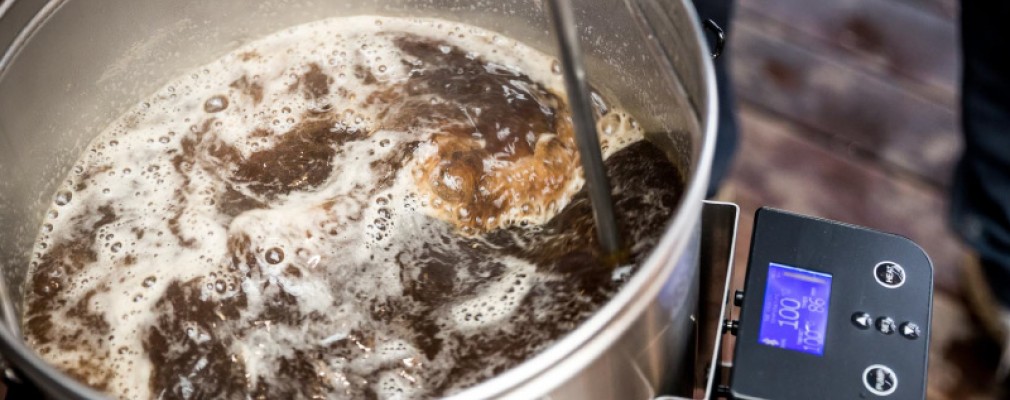
0
4098
Data publikacji:
14
APR
2022
Grainfather G30 - home brewery automation.
When the water reaches the desired temperature, pour in the malt. Of course, before that, we have to put a basket in the boiler with a perforated bottom and a steel tube to remove the excess wort. Pre-mix the mash by hand to evenly distribute it in the water and cover it with a perforated steel cover. Thanks to it, the wort served, the pressed wort will spread evenly in the mash without disturbing it. Then we start the pump. The mashing takes place by circulating the liquid in the mash.
Udostępnij:
COPYRIGHT 2020 Twój Browar ALL RIGHTS RESERVED Design and implementation dih.pl
















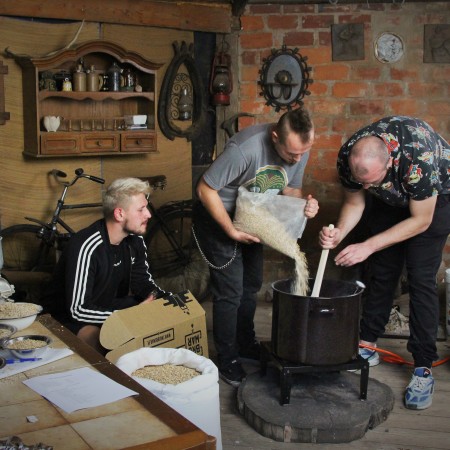 To brew beer, all you need is a large pot with a capacity of 30-40l, a cooker, a thermometer and some small equipment. Of course, this "little" can grow into a sizeable brewing arsenal. Finally, somehow you have to deal with the filtration of the wort after mashing and hopping, cooling it after the end of cooking, monitoring the temperature during mashing, controlling the duration of subsequent processes. As a result, traditionally brewing in a pot on a stove, we are often surrounded by a battery of equipment and various trinkets. We effectively occupy the entire kitchen for half a day, not to mention the amount of cleaning after cooking. These activities do not necessarily go hand in hand with the joy of our partners or other people with whom we share our life space.
To brew beer, all you need is a large pot with a capacity of 30-40l, a cooker, a thermometer and some small equipment. Of course, this "little" can grow into a sizeable brewing arsenal. Finally, somehow you have to deal with the filtration of the wort after mashing and hopping, cooling it after the end of cooking, monitoring the temperature during mashing, controlling the duration of subsequent processes. As a result, traditionally brewing in a pot on a stove, we are often surrounded by a battery of equipment and various trinkets. We effectively occupy the entire kitchen for half a day, not to mention the amount of cleaning after cooking. These activities do not necessarily go hand in hand with the joy of our partners or other people with whom we share our life space.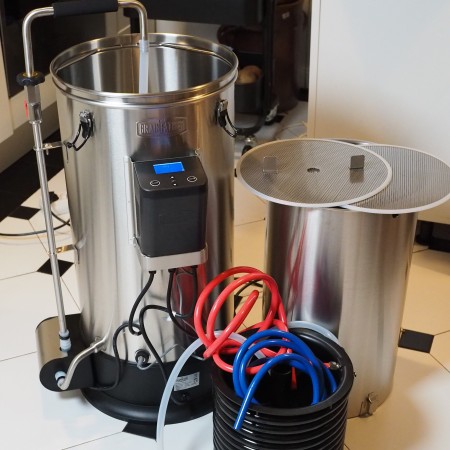
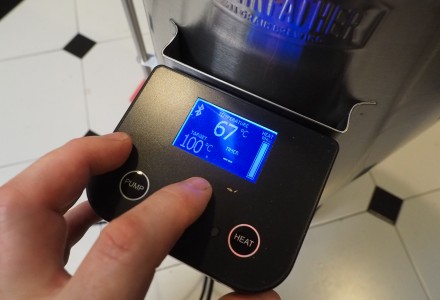 First, we heat the water. We set the desired temperature on the controller manually or using an application on the phone and also start the heater via the controller. The time to heat 15l of water from 20 ° C to 68 ° C is about 30 minutes
First, we heat the water. We set the desired temperature on the controller manually or using an application on the phone and also start the heater via the controller. The time to heat 15l of water from 20 ° C to 68 ° C is about 30 minutes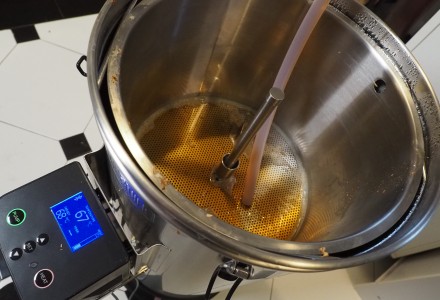 The wort is collected from under the mash basket and served from the top of the mash. Thanks to this, it flushes the sugars through the malt. The efficiency of such mashing is about 80%. We achieve this result with 3 to 6 kg of mash. For larger amounts of malt, the yield is about 70%. The maximum amount of malt that the basket can hold is 9 kg.
The wort is collected from under the mash basket and served from the top of the mash. Thanks to this, it flushes the sugars through the malt. The efficiency of such mashing is about 80%. We achieve this result with 3 to 6 kg of mash. For larger amounts of malt, the yield is about 70%. The maximum amount of malt that the basket can hold is 9 kg.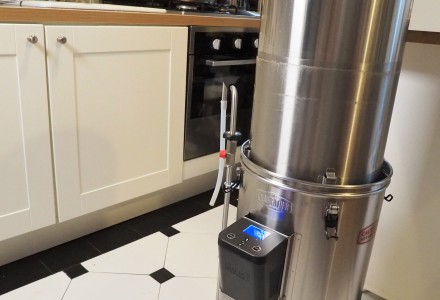 After mashing is finished, lift the mash basket and place it on a special fixture at the top of the boiler. As a result, the wort flows down by gravity from the spent grain. When we notice that most of the wort has drained, pour in the water previously heated in a separate pot. Thanks to the perforated lid, we do not create a mash while pouring. The entire process runs smoothly and hassle-free. When we start sparging, we can set the heater to the cooking process, thanks to which, when we finish, the wort is close to the boiling point. Thus, we save a lot of time and energy.
After mashing is finished, lift the mash basket and place it on a special fixture at the top of the boiler. As a result, the wort flows down by gravity from the spent grain. When we notice that most of the wort has drained, pour in the water previously heated in a separate pot. Thanks to the perforated lid, we do not create a mash while pouring. The entire process runs smoothly and hassle-free. When we start sparging, we can set the heater to the cooking process, thanks to which, when we finish, the wort is close to the boiling point. Thus, we save a lot of time and energy.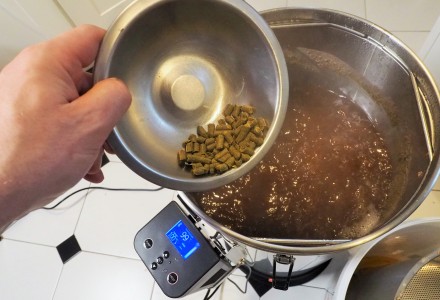 The heater with which the Grainfather G30 is equipped ensures very intensive boiling of the wort, which allows for effective extraction of the bitterness and aroma of hops. However, we must remember to pour it carefully, because it may boil over rapidly. If we do not want to boil very stormily, we set the temperature on the controller to a temperature lower than 100 ° C. A convenience is the ability to program a timer, which will inform you about the next hopping stage with a sound signal. Hops can be cooked without the use of hopping nets or hop spider baskets. This type of hopping allows you to get the best aromatic effects. An inconspicuous filter attached to the bottom effectively eliminates hops. During boiling, a counter-flow cooler is connected to the pump. In order to disinfect, the boiling wort should be passed through it in a closed circuit for about 10 minutes, which is then returned to the boiler.
The heater with which the Grainfather G30 is equipped ensures very intensive boiling of the wort, which allows for effective extraction of the bitterness and aroma of hops. However, we must remember to pour it carefully, because it may boil over rapidly. If we do not want to boil very stormily, we set the temperature on the controller to a temperature lower than 100 ° C. A convenience is the ability to program a timer, which will inform you about the next hopping stage with a sound signal. Hops can be cooked without the use of hopping nets or hop spider baskets. This type of hopping allows you to get the best aromatic effects. An inconspicuous filter attached to the bottom effectively eliminates hops. During boiling, a counter-flow cooler is connected to the pump. In order to disinfect, the boiling wort should be passed through it in a closed circuit for about 10 minutes, which is then returned to the boiler.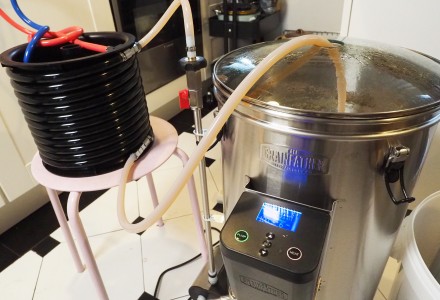 In order for the wort after hopping to be filtered as well as possible, it should be pumped again in a closed circuit for about 5-10 minutes. Thanks to this, the hops in the wort will settle down and create a natural filtering layer at the same time. Problems during filtration may appear with larger amounts of hops - over 150g of used pellets. The amount of hops may limit the flow through the filter which will weaken the wort stream. In such situations, the filtration and cooling process will take longer. Cooling takes place by means of a counter-flow cooler. The principle of operation is the heat exchange inside the radiator. Inside there is a spiral through which we release cold water and another through which the hot wort flows. By flowing through the entire cooler, the wort is usually cooled without major problems to approx. 20. How much we lower the temperature of the wort depends on the temperature of the water in the tap and the wort flow rate in the cooler. To make it easier to connect the cooler to the tap, the manufacturer has included a set of adapters that allows you to connect the cooler.
In order for the wort after hopping to be filtered as well as possible, it should be pumped again in a closed circuit for about 5-10 minutes. Thanks to this, the hops in the wort will settle down and create a natural filtering layer at the same time. Problems during filtration may appear with larger amounts of hops - over 150g of used pellets. The amount of hops may limit the flow through the filter which will weaken the wort stream. In such situations, the filtration and cooling process will take longer. Cooling takes place by means of a counter-flow cooler. The principle of operation is the heat exchange inside the radiator. Inside there is a spiral through which we release cold water and another through which the hot wort flows. By flowing through the entire cooler, the wort is usually cooled without major problems to approx. 20. How much we lower the temperature of the wort depends on the temperature of the water in the tap and the wort flow rate in the cooler. To make it easier to connect the cooler to the tap, the manufacturer has included a set of adapters that allows you to connect the cooler. Using the Grainfather G30 kettle, we can prepare 20-25l of wort with an initial density of 8-14 Plato until the yeast is applied in an average of 3.5 hours. With the right practice, this time can be even shorter. With a higher Plato value, we deal with larger charges. In such cases, this time is a bit longer, but unless we have difficult-to-filter wheat or rye mashes, it should not exceed 4 hours. To shorten the brewing time, you can program a "timer" that will start heating the water to a specific temperature at a set time. Thanks to this, the water that is ready for mashing can wait for us, for example, when we come home from work. It is not necessary to spend half a day brewing beer. We can easily do them in the short afternoon or in the morning. The brewing space is practically limited to 1m² - that is as much as we need to set up the kettle and fermenter. The number of additional accessories can be limited only to a hydrometer and a pad for mixing the mash. Knowing the behavior of the G30 during operation, a large part of the time during mashing can be spent on other activities. An undoubted convenience is the application that allows you to prepare recipes, the mashing scheme of which is sent to the controller - then the temperatures and duration of individual stages are set automatically. Using our brewing calculator you can also export the prepared recipe to the controller.
Using the Grainfather G30 kettle, we can prepare 20-25l of wort with an initial density of 8-14 Plato until the yeast is applied in an average of 3.5 hours. With the right practice, this time can be even shorter. With a higher Plato value, we deal with larger charges. In such cases, this time is a bit longer, but unless we have difficult-to-filter wheat or rye mashes, it should not exceed 4 hours. To shorten the brewing time, you can program a "timer" that will start heating the water to a specific temperature at a set time. Thanks to this, the water that is ready for mashing can wait for us, for example, when we come home from work. It is not necessary to spend half a day brewing beer. We can easily do them in the short afternoon or in the morning. The brewing space is practically limited to 1m² - that is as much as we need to set up the kettle and fermenter. The number of additional accessories can be limited only to a hydrometer and a pad for mixing the mash. Knowing the behavior of the G30 during operation, a large part of the time during mashing can be spent on other activities. An undoubted convenience is the application that allows you to prepare recipes, the mashing scheme of which is sent to the controller - then the temperatures and duration of individual stages are set automatically. Using our brewing calculator you can also export the prepared recipe to the controller.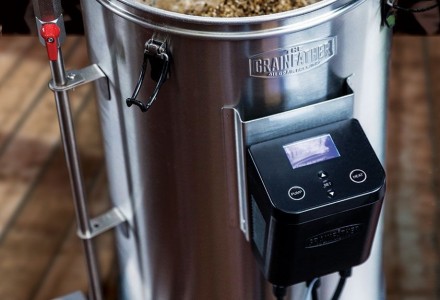 In conclusion, there is no doubt that the Grainfather kettle brings us real benefits. In addition, the quality of workmanship and the solutions characteristic of this brand, such as: an efficient pump and counter-flow cooler, an advanced bluetooth controller, Grainfather application and internet platform, and access to all spare parts - are undoubted advantages. When you buy in the Twój Browar store, which is the official distributor of Grainfather products in Poland, you also have a guaranteed equipment service and the ability to order any parts and accessories offered by the manufacturer.
In conclusion, there is no doubt that the Grainfather kettle brings us real benefits. In addition, the quality of workmanship and the solutions characteristic of this brand, such as: an efficient pump and counter-flow cooler, an advanced bluetooth controller, Grainfather application and internet platform, and access to all spare parts - are undoubted advantages. When you buy in the Twój Browar store, which is the official distributor of Grainfather products in Poland, you also have a guaranteed equipment service and the ability to order any parts and accessories offered by the manufacturer.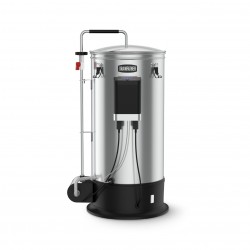
Dodaj komentarz
0 komentarze